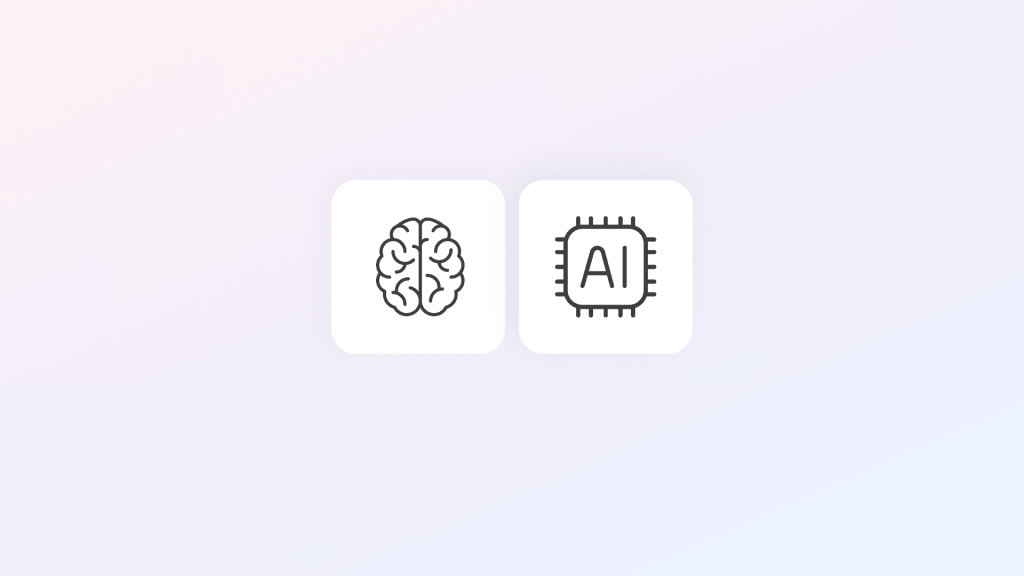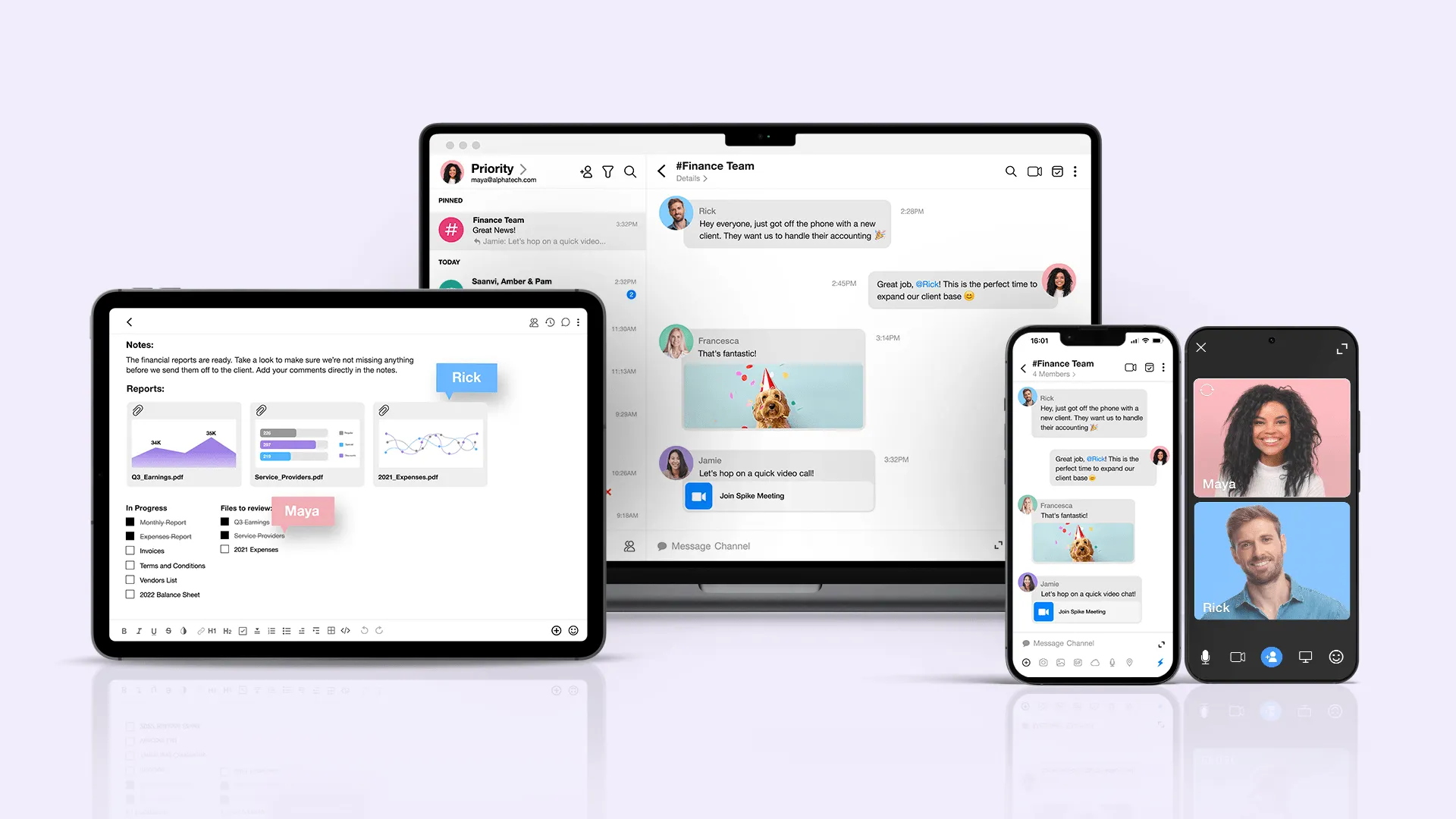The Rise of Collaborative AI: How Human-AI Partnerships Are Reshaping the Workplace

Every major technological shift has changed how we work. The printing press revolutionized knowledge sharing. The computer transformed data processing. The internet reshaped communication. Each innovation radically expanded our capabilities, but ultimately, they remained tools—we pressed the buttons, we did the thinking, and they responded to our commands.
AI is different.
If you’ve spent time with ChatGPT or other AI platforms, you’ve probably sensed an evolution: you’re no longer just clicking or typing at a machine; you’re interacting with something that can interpret context, anticipate what you might need next and refine your thinking.
AI is more than just faster outputs or better search results. It’s a new partnership that augments how we reason, create, and collaborate.
Yet, despite this potential, AI is often treated like a supercharged assistant. We request meeting summaries, draft emails, or run data analyses. While these interactions are undeniably helpful, they tend to stop there. In essence, we’re leaving a lot of capability on the table.
This article explores how and why AI can and should evolve from mere task execution to genuine collaboration. We’ll examine the:
- Why today’s AI use is still too limited, and how it’s keeping professionals stuck in a cycle of manual effort.
- The trust barriers that prevent AI adoption, including fears around control, accuracy, and data security.
- What true AI collaboration looks like in practice.
The real game-changer isn’t humans using AI. It’s humans and AI thinking together.
Why AI Is Different to the Tech That Came Before
For decades, new digital tools claimed they would “change everything.” And to be fair, many did, just not in the way we imagined:
- Search engines opened up a world of information, yet they require us to transform that information into something meaningful manually.
- Project management software simplified task distribution but never adapted to each individual’s unique cognitive style or how teams organically collaborate.
- Voice assistants (Siri, Alexa) felt futuristic but remained reactive—waiting for commands instead of proactively offering solutions.
- Collaboration Tools (Slack, Microsoft Teams): They revolutionized workplace communication but didn’t reduce information overload.
Each new tool made us more efficient at our current tasks. However, the cognitive load required to sift through data, juggle tasks, and make decisions remains firmly on humans.
AI stands apart because it can take on some of that cognitive load. It recognizes patterns, surfaces relevant insights, and even challenges your assumptions. Instead of just digitizing tasks, it can shape how we think about those tasks in the first place.
Key Difference:
AI can co-generate ideas. It’s proactive, context-aware, and can be taught to adapt to the nuances of your workflow.d can be taught to adapt to the nuances of your workflow.
The Limitations of Today’s AI Use
Right now, most people interact with AI in a command-response loop:
- You ask for something (e.g., “Draft a recap of yesterday’s meeting”).
- AI delivers a response.
- You move on until you need something else.
Sure, it saves time and reduces mundane tasks. However, consider how this approach keeps AI relegated to the role of a sophisticated tool rather than a partner.
The result?
You still shoulder the bulk of strategic thinking:
- Deciding what to ask AI.
- Manually piecing together various AI outputs into cohesive insights.
- Verifying everything the AI provides.
Yes, it’s more efficient than manual processes, but it doesn’t transform your workflow. It’s like having a talented but silent teammate who only speaks up when you remember to call on them.
A recent study from MIT Sloan underscores that AI’s real value emerges when it’s integrated as a collaborator, not just an automation tool. The more AI can engage in continuous dialogue and context-building, the more it elevates human judgment and creativity.
Reimagining AI as a Collaborative Partner
So, what does genuine AI collaboration look like? Let’s compare two scenarios:
Before: Transactional AI
- Scheduling: You open your calendar, find a free slot for a meeting, and then ask AI to send an invite.
- Research: You prompt AI to fetch statistics or summarize an article. You parse that info yourself, carefully weaving it into your project.
- Report Generation: You request a basic report, and AI spits out data that you still have to interpret.
After: AI as Co-Thinker
- Proactive Preparation: AI notices you have a strategy meeting tomorrow; it automatically surfaces relevant sales reports, previous meeting notes, and creative briefs that might spark ideas.
- Contextual Insights: Based on patterns from past projects, AI highlights potential market shifts or overlooked data points before you even realize you need them.
- Refinement in Real-Time: As you draft your presentation, AI offers suggestions to strengthen your argument or clarify ambiguous details.
Notice the difference?
The AI isn’t just waiting for prompts; it’s working alongside you, anticipating needs, and shaping how you solve problems. This isn’t about turning humans into passive observers. It’s about freeing us from low-level chores so we can focus on higher-order thinking, i.e. strategy, creativity, and innovation.
Emotional and Practical Benefits of Human-AI Collaboration
Consider how it feels to have this kind of partner:
- Less overwhelm: Instead of toggling between tabs, emails, and Slack channels, you have a single co-pilot that harmonizes information, preventing cognitive overload.
- Greater confidence: With an AI that cross-checks your assumptions and flags hidden opportunities, you can make bolder decisions faster.
- Sparked creativity: Collaboration often leads to serendipitous ideas. Imagine an AI constantly suggesting new angles or pointing out subtle patterns you missed.
- Reduced stress, enhanced flow: When routine tasks are handled automatically, your mind stays focused on the bigger picture—creativity, strategy, and human connection.
How to Overcome the Trust Barrier
Of course, none of this matters if professionals don’t trust AI to co-think responsibly. Common questions include:
- “How do I know if AI’s recommendation is sound?”
- “If AI learns from my work, who owns the insights?”
- “Will AI override my judgment without me realizing?”
These concerns are valid, and trust is essential. If AI is to become a real partner in decision-making, it must be transparent, controllable, secure, and capable of learning from user feedback in a way that respects confidentiality.
Building Trust: Four Requirements
-
Transparency:
AI should reveal its reasoning or data sources. Instead of simply stating, “Here’s your top lead,” it explains, “Based on your company’s historical sales data, this lead mirrors your past highest-converting customers.”
-
User Control:
AI should propose, not impose. You remain free to adjust, refine, or override AI’s suggestions. Like a conversation with a teammate who respects your final call.
-
Privacy & Ownership:
Organizations and individuals must know exactly how their data is stored and used. A genuinely collaborative AI will maintain strict boundaries and allow you to decide which insights it retains for future reference.
-
Continuous Learning:
When AI slips up, or your goals change, you correct it, and it adapts. Thus, each interaction should better align with your thought process and ethical boundaries.
Real-World Example:
A next-generation AI platform might prompt you:
“I’ve noticed your marketing focus has shifted to Gen Z. Would you like me to deprioritize older demographic studies?”
If you disagree, you can teach it your rationale, and it then recalibrates. Over time, AI shapes itself according to your evolving strategy, not vice versa.
The Emerging Solutions: A Peek at Next-Gen AI
We have already seen glimpses of AI solutions that aim to deepen this relationship. Think of it like having a PersonalGPT. An AI that not only drafts text but also absorbs your preferences, style, and workflow nuances in a way that feels almost human.
Here’s a taste of what that could mean:
- Personalized Knowledge Base: Instead of scraping generic data, the AI is trained on your organization’s unique history, brand voice, and project archives.
- Adaptive Communication: It doesn’t just respond to your commands; it learns how and when you like to receive suggestions or be challenged.
- Ethical Guardrails: It respects privacy settings and intellectual property boundaries, ensuring no cross-contamination of data.
This isn’t sci-fi. It’s the logical next phase for AI: not just generating content but collaborating in real time, shaping and being shaped by human users.
A Necessary Evolution
If you’re already comfortable with generative AI, you might wonder if there’s much more to explore.
Spoiler alert: There is.
The shift from AI as a passive tool to an active collaborator is inevitable. It’s like going from using a simple word processor to working in a live, shared document with a colleague who’s a subject-matter expert.E xcept that colleague is available 24/7 and has a near-infinite capacity to learn.
Organizations that recognize this potential early will define collaboration in the decade ahead. Professionals who embrace AI co-thinking now will emerge not just as adopters but as orchestrators of a more integrated, dynamic, and human-centered future of work.
Bringing AI Collaboration to Life with Spike AI

The shift from AI as a tool to AI as a true thought partner isn’t just theoretical—it’s happening now. And for professionals looking to bridge that gap today, Spike AI is leading the way.
Spike AI is built for real collaboration, unlike traditional AI-powered productivity tools that simply automate tasks. It understands context, anticipates needs, and enhances your thinking.
What Makes Spike AI Different?
- Integrated, not isolated: Unlike standalone AI assistants, Spike AI is embedded directly into your communication workflow. Your insights, messages, and workstreams stay connected.
- Context-aware assistance: It summarizes emails, generates responses, refines ideas, and helps organize priorities, all within your inbox.
- Seamless collaboration: AI isn’t just working for you—it’s working with you, helping to streamline conversations, surface key takeaways, and suggest action items before you even ask.
Spike AI isn’t just about efficiency—it’s about enhancing how you think, work, and collaborate.
Looking Ahead
We’re standing on the cusp of a significant evolution in how we work:
AI is no longer just an automation tool. It’s becoming the smartest collaborator in the room. Whether it’s surfacing insights, managing workflows, or optimizing communication, the next generation of AI isn’t something to wait for, it’s something to embrace now
So the real question isn’t if you’ll embrace AI as a collaborative partner—but when. Those who do it sooner stand to become the architects of a more innovative, efficient, and human-centered way of working, and in that landscape, AI isn’t just another tool on your belt; it’s the colleague you never knew you needed—until now.




